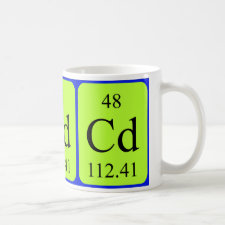
Authors: Fu JQ, Wang XY, Li JH, Ding YJ, Chen LX
Article Title: Synthesis of multi-ion imprinted polymers based on dithizone chelation for simultaneous removal of Hg2+, Cd2+, Ni2+ and Cu2+ from aqueous solutions.
Publication date: 2016
Journal: RSC Advances
Volume: 6
Issue: (50)
Page numbers: 44087-44095.
DOI: 10.1039/C6RA07785D
Abstract: Simultaneous analysis and removal of various heavy metal ions has received increasing concerns because they are usually co-existent with different toxicological effects. Ion imprinted polymers (IIPs) can effectively identify water-soluble ions especially heavy metal ions, however, multi-ion imprinting is rarely performed owing to possible cross-reactivity and matrix interferences. In this work, a novel and generally applicable IIPs strategy was proposed for simultaneous preconcentration and removal of four heavy metal ions based on dithizone chelation. Multi-ion imprinted polymers (MIIPs) embedded in a sol-gel matrix were prepared by using Hg2+, Cd2+, Ni2+ and Cu2+ as templates and 3-aminopropyltriethoxysilane as a functional monomer, and the possible synergy mechanism was explored between dithizone coordination chemistry and multi-ion imprinting. The structures, morphologies and thermostability of MIIPs were well characterized by Fourier transform infrared (FT-IR), scanning electron microscopy (SEM), Brunauer-Emmett-Teller (BET) and thermogravimetry analysis (TGA). The resultant MIIPs showed high binding capacity and fast dynamics, and the adsorption processes obeyed Langmuir isotherm and pseudo-second-order dynamic models. The MIIPs displayed excellent selectivity toward the four target ions particularly over Pb2+, Zn2+ and Co2+ with selective coefficients of 6.8-16.9, as well as high anti-interference ability when confronted with common co-present various ions. Moreover, a high preparation yield of 41% and good reusability over 90% desorption efficiency were obtained. Consequently, the MIIPs were used as solid-phase extraction sorbents for preconcentration of trace Hg2+, Cd2+, Ni2+ and Cu2+, presenting high detectability up to 6.0-22.5 ng L-1 and satisfactory recoveries ranging from 94.7-110.2% in seawater samples. The developed MIIPs-based method proved to be a practically feasible method in heavy metal removal and water pretreatment
Template and target information: multi-template, multi-ion, mercury ion, Hg(II), cadmium ion, Cd(II), nickel ion, Ni(II), copper ion, Cu(II)



Join the Society for Molecular Imprinting

New items RSS feed
Sign-up for e-mail updates:
Choose between receiving an occasional newsletter or more frequent e-mail alerts.
Click here to go to the sign-up page.
Is your name elemental or peptidic? Enter your name and find out by clicking either of the buttons below!
Other products you may like:
 MIPdatabase
MIPdatabase









